Common Houseplant Diseases and How to Treat Them
Learn to identify and treat the most common diseases that affect indoor plants, from fungal infections to bacterial problems.
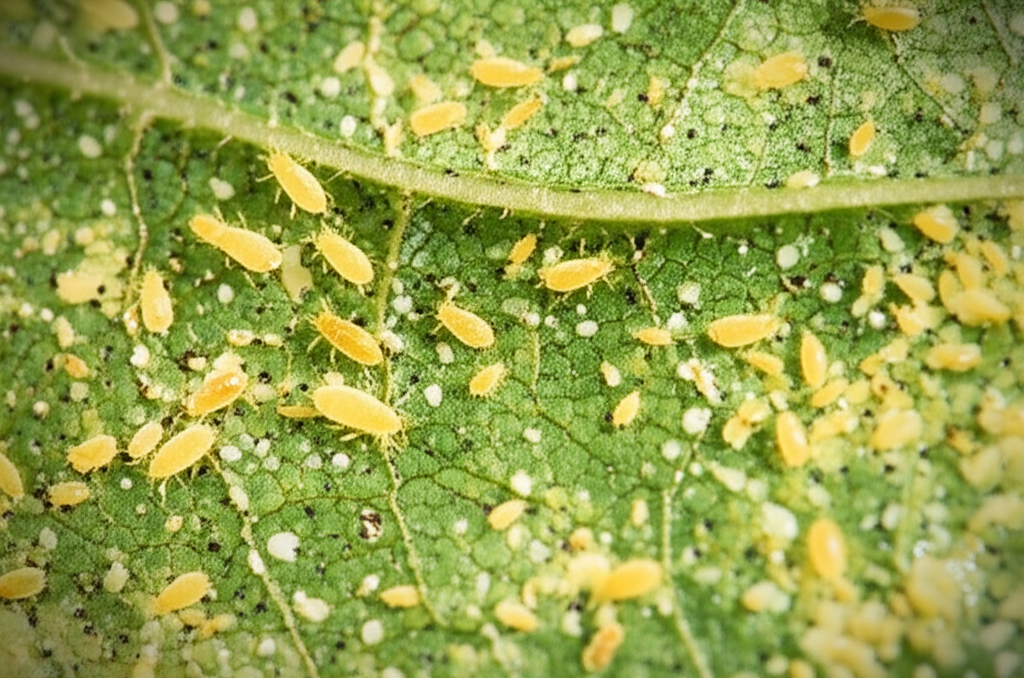
Even with the best care, houseplants can sometimes fall victim to diseases. Early identification and proper treatment are key to saving your plants and preventing the spread to your entire collection. Understanding the different types of plant diseases and their symptoms will help you become a more successful plant parent.
🚨 Emergency Signs
If you notice sudden wilting, black stems, foul odors, or rapid yellowing affecting multiple plants, act immediately to prevent spread to your entire collection.
Common Fungal Diseases
Fungal diseases are among the most common issues affecting houseplants, often caused by overwatering, poor air circulation, high humidity, or contaminated soil. These diseases thrive in moist conditions and can spread quickly between plants.
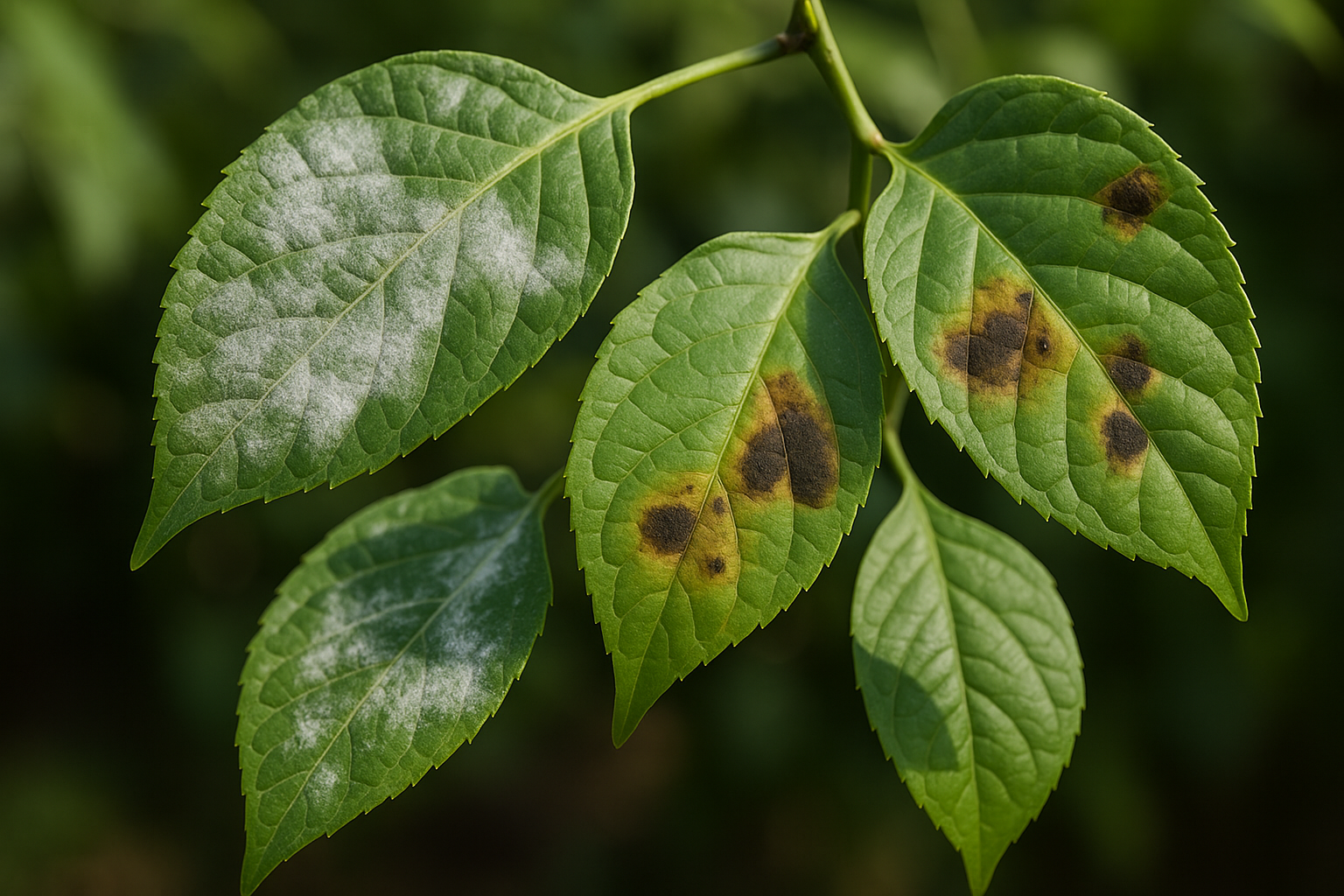
Root Rot
Root rot is caused by overwatering and poor drainage, leading to oxygen-starved roots that become susceptible to fungal pathogens like Pythium and Phytophthora.
Symptoms: Yellowing leaves (starting from bottom), wilting despite moist soil, mushy black or brown roots, foul smell from soil, stunted growth, and leaves dropping suddenly.
Treatment: Remove plant from pot immediately. Trim away all black, mushy roots with sterilized scissors. Wash remaining healthy roots with diluted hydrogen peroxide (1:3 ratio). Repot in fresh, well-draining soil in a clean pot. Reduce watering frequency and ensure proper drainage.
Powdery Mildew
A fungal infection that appears as white, powdery coating on leaves and stems. Common in humid conditions with poor air circulation, especially affecting plants like begonias, African violets, and succulents.
Symptoms: White or gray powdery spots on leaf surfaces, yellowing leaves, stunted growth, and eventual leaf drop if untreated.
Treatment: Improve air circulation immediately. Remove affected leaves. Apply neem oil or baking soda solution (1 tsp per quart of water). Reduce humidity and avoid overhead watering. Consider using a fungicidal spray for severe cases.
Leaf Spot Diseases
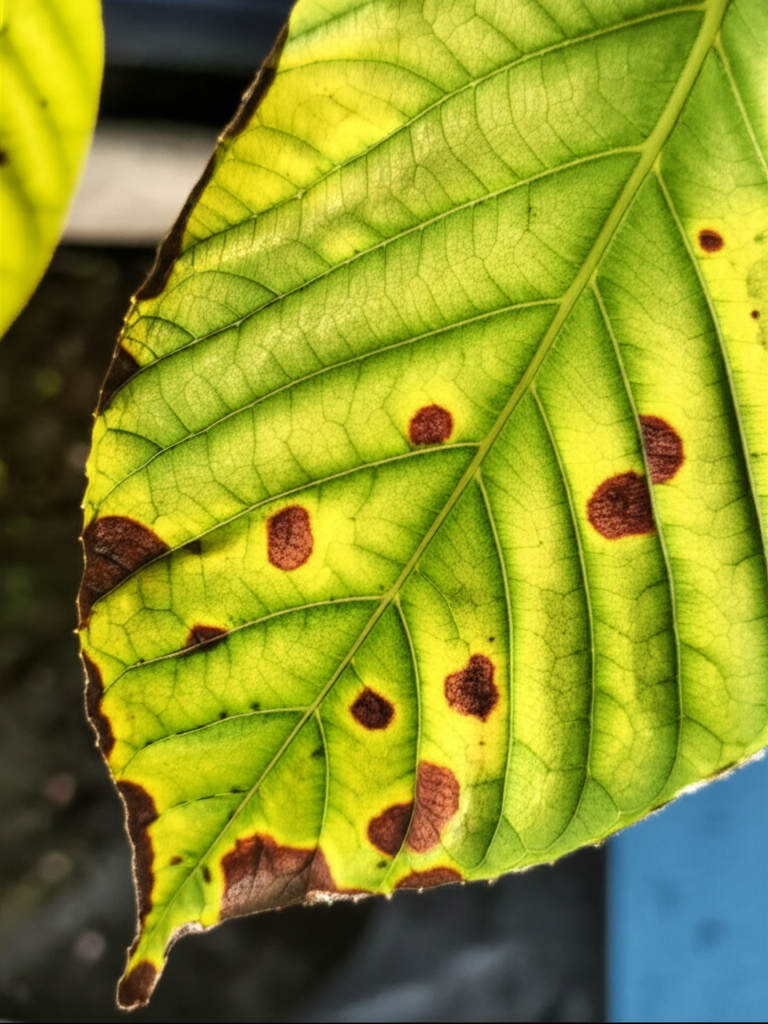
Various fungi cause circular or irregular spots on leaves, often with distinct borders and varying colors.
Symptoms: Brown, black, or yellow spots on leaves, often with yellow halos. Spots may have concentric rings or fuzzy fungal growth.
Treatment: Remove affected leaves immediately. Improve air circulation and avoid getting water on leaves. Apply copper-based fungicide if necessary. Ensure proper spacing between plants.
Sooty Mold
A secondary fungal infection that grows on honeydew secreted by insects like aphids or scale insects.
Symptoms: Black, sooty coating on leaves and stems that can be wiped off. Reduced photosynthesis and yellowing leaves.
Treatment: Address the underlying pest problem first. Clean leaves with mild soapy water. Improve air circulation and reduce humidity.
Bacterial Diseases
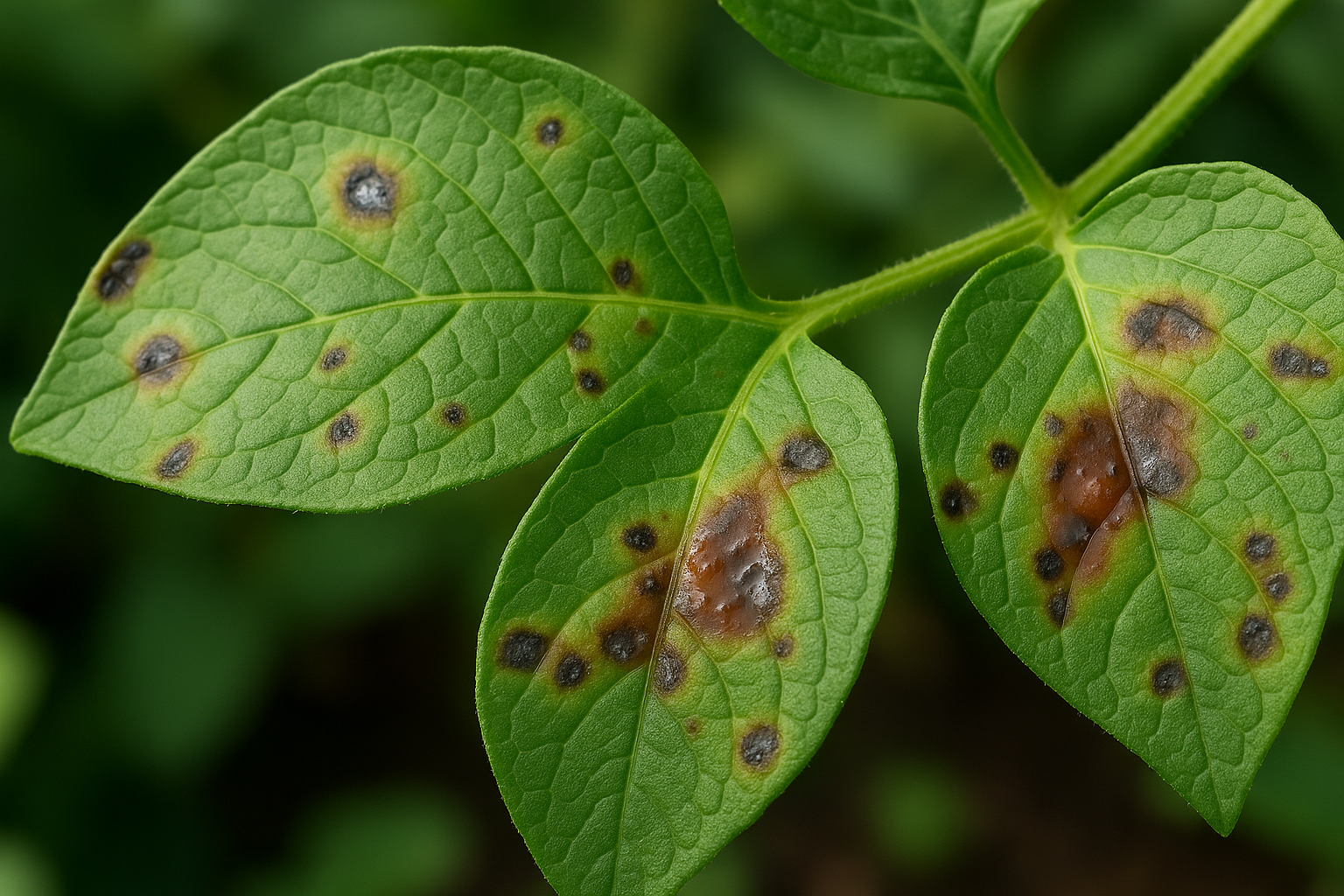
Bacterial infections often enter through wounds in the plant and can spread quickly if not treated promptly. They're particularly problematic in warm, humid conditions and can be more challenging to treat than fungal diseases.
Bacterial Leaf Spot
Caused by various bacteria including Xanthomonas and Pseudomonas species.
Symptoms: Water-soaked spots that turn brown or black, yellow halos around spots, rapid spread in humid conditions, and eventual leaf drop.
Treatment: Remove infected leaves immediately. Improve air circulation and reduce humidity. Avoid overhead watering. Apply copper-based bactericide. Quarantine affected plants.
Bacterial Wilt
A serious condition where bacteria block the plant's vascular system, preventing water transport.
Symptoms: Sudden wilting despite adequate moisture, yellowing leaves, brown streaks in stems when cut, and rapid plant decline.
Treatment: Unfortunately, bacterial wilt is often fatal. Remove affected plants immediately to prevent spread. Disinfect tools and pots thoroughly.
Soft Rot
Particularly common in succulent plants and those with fleshy stems or leaves.
Symptoms: Soft, mushy, water-soaked areas that smell foul, rapid breakdown of plant tissue, and blackening of affected areas.
Treatment: Remove affected portions immediately with sterilized tools. Allow cut areas to dry and callus. Reduce watering and improve air circulation. May require complete plant replacement.
Viral Diseases
Viral infections are less common but can be devastating. They're usually spread by insects or contaminated tools and cannot be cured, only managed.
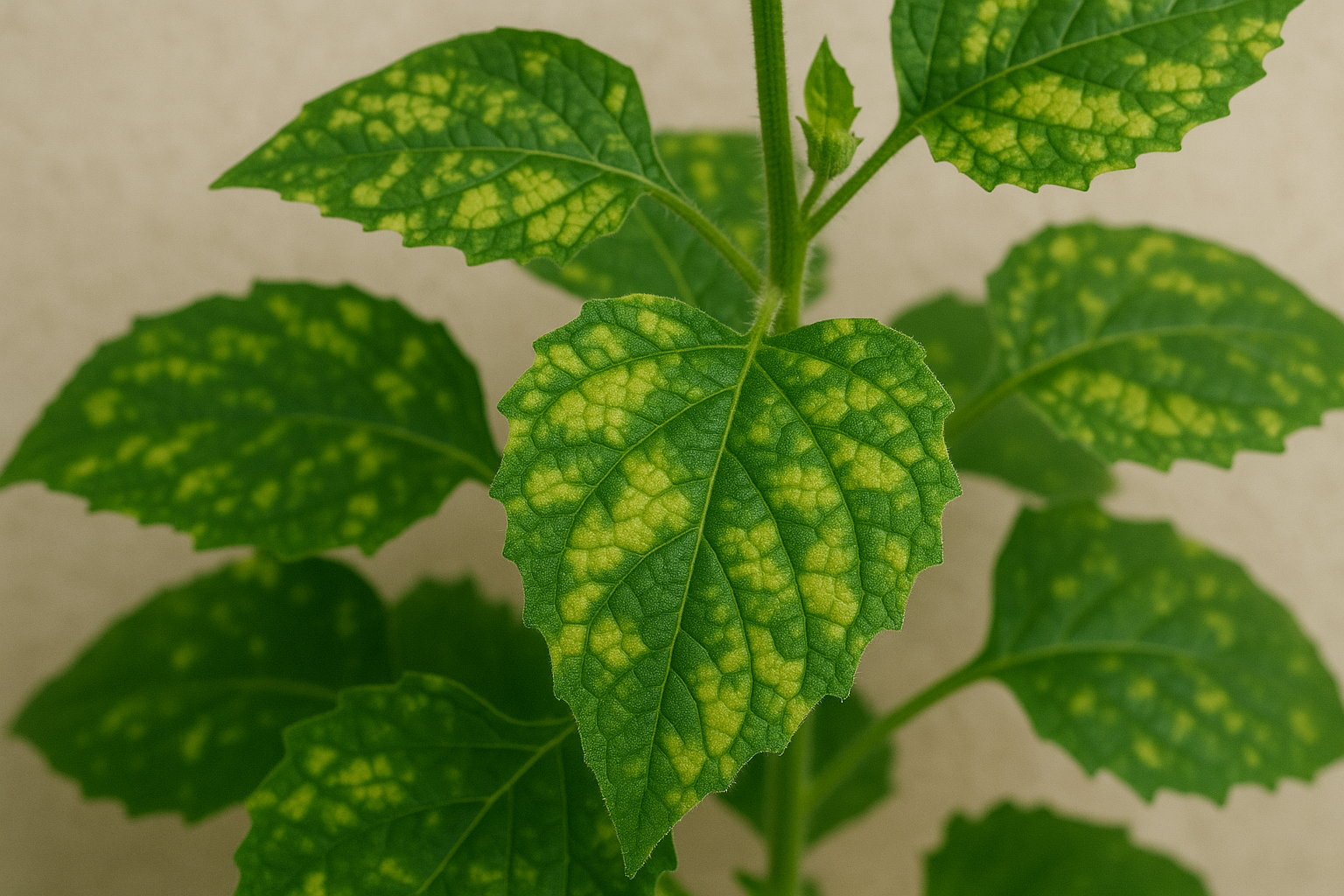
Mosaic Virus
Symptoms: Mottled yellow and green patterns on leaves, distorted growth, stunted plants, and reduced flowering.
Management: Remove infected plants to prevent spread. Control insect vectors like aphids. Disinfect tools between plants. No cure available.
When to Give Up on a Plant
Sometimes it's better to remove a severely infected plant to protect your collection:
- When more than 50% of the plant is affected by disease
- If you detect bacterial wilt or severe viral infections
- When root rot has destroyed most of the root system
- If treatment attempts have failed after 2-3 weeks
- When the disease is spreading rapidly to other plants
Prevention Strategies
Prevention is always better than treatment. Follow these comprehensive strategies:
Environmental Controls
- Ensure proper drainage in all pots with drainage holes
- Maintain appropriate humidity levels (40-60% for most houseplants)
- Provide adequate air circulation with fans if necessary
- Avoid overcrowding plants
- Place plants in appropriate light conditions
Watering Best Practices
- Water at soil level to keep leaves dry
- Water in the morning so excess moisture evaporates
- Use room temperature water
- Allow soil to dry appropriately between waterings
- Use well-draining potting mixes
Hygiene and Maintenance
- Quarantine new plants for 2-3 weeks before adding to your collection
- Clean and disinfect tools between plants (70% isopropyl alcohol)
- Remove dead or dying plant material promptly
- Inspect plants regularly for early signs of disease
- Wash hands between handling different plants
- Use sterile potting soil and clean pots
💡 Pro Tip
Keep a plant health journal to track watering, fertilizing, and any issues. This helps you identify patterns and catch problems early. Take photos of your plants regularly to monitor their health over time.
